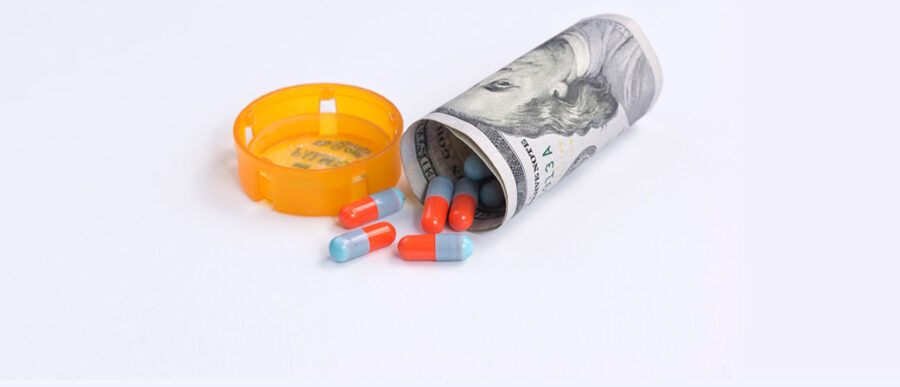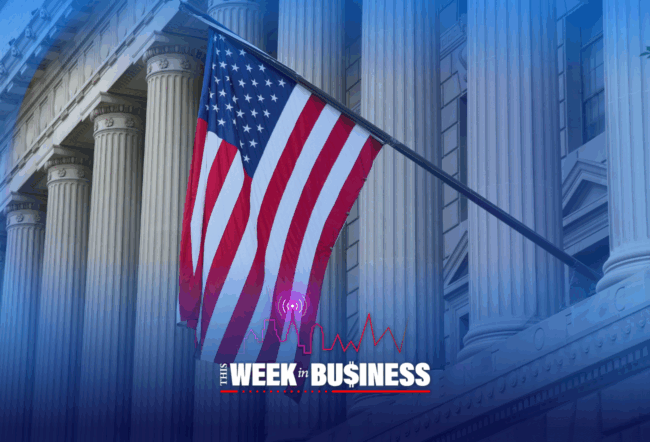Millions of Americans say they struggle to pay the cost of prescription drugs every month, with many resorting to skipping or rationing doses in order to preserve their finances. Rising drug prices have become a major issue for Congress and for the Trump administration, which has unveiled a series of regulatory proposals designed to drive costs down.
But why are drug prices in the U.S. so high? Unlike in other countries, pharma companies are able to set their own prices for drugs without facing a review panel or some other type of government oversight. With the 2020 elections on the horizon and an unforgiving public mood, the right environment exists for policymakers to pass additional regulation, and attempt to make progress where market mechanisms have failed, say two Wharton experts.
Indeed, a survey released March 1 by the Kaiser Family Foundation found that about a quarter of participants have struggled to pay for their prescription drugs and a bipartisan majority supported government regulations to keep costs down, including making it easier for generics to come to market, allowing Americans to buy drugs from Canada and increasing taxes on companies whose prices are determined to be too high.
When the heads of seven major pharmaceutical companies testified at a Senate Finance Committee hearing last week, they placed the blame on insurance companies and pharmacy benefit managers (PBMs) that extract large rebates and discounts from the drug makers that aren’t passed on to consumers. The CEOs said this causes their companies to raise list prices and leads to higher co-payments for customers. The companies represented in the hearing were Pfizer, Merck, AbbVie, AstraZeneca, Bristol-Myers Squibb, Johnson & Johnson’s Janssen Pharmaceuticals unit, and Sanofi.
But pharmacy benefits managers have said that, as third-party middlemen, they negotiate rebates that actually make drugs more affordable, in addition to providing other services.
A Sense of Déjà Vu
Are drug prices likely to become more affordable after the latest hearing? “We’ve been down this road before,” said Robert Field, professor of law and health management and policy at Drexel University, as well as a lecturer in Wharton’s health care management department. He recalled that the Kefauver–Harris hearings in the late 1950s covered almost the same ground (they eventually resulted in landmark legislation requiring pharmaceutical companies to prove the efficacy of their drugs before they took them to market). “If you go through the transcripts of those hearings, it’s kind of eerie. You could almost take quotes out of that and put it into [last week’s] hearing.”
Wharton professor of health care management Ashley Swanson said she was skeptical about the Senate hearing resulting in lower drug prices. “When you see a lot of finger-pointing without any real conclusions drawn about what policies are going to facilitate competition or bring prices down or put stronger pricing pressures on drugs with close substitutes, it makes you a little bit pessimistic,” she said.
“It’s like a chronic condition that flares up every decade or two and then goes into remission and we don’t really do anything to get to the root cause.”–Robert Field
Field and Swanson discussed the likely outcomes of the Senate hearing on drug prices on the Knowledge at Wharton radio show on SiriusXM. (Listen to the podcast at the top of this page.)
How Rebates Drive Up Prices
The starkest example of the impact of rebates was that of Sanofi’s insulin product Lantus. After rebates to insurance companies and PBMs, the “net price’’ of Lantus has fallen more than 30% since 2012, while average out-of-pocket costs for patients with insurance have risen 60%, Sanofi CEO Olivier Brandicourt said at the hearing, the Washington Post reported. The increase has created widespread outcry because the two other insulin manufacturers, Novo Nordisk and Eli Lilly have also raised their prices over a similar period. In response to the criticism, Lilly on March 4 announced that it would roll out a half-price version of its Humalog brand of insulin.
“The list price is actually working against the patient,’’ Merck CEO Kenneth C. Frazier acknowledged at the hearing. “The people who can least afford it are paying the most.”
Field agreed that getting rid of rebates would help, but wondered if that would be a “superficial” or a “structural” solution. “We need something to get to the root of the problem,” he said. “We need to address … the way the companies game the generics business and pay to keep generics off the market, and add superfluous patents so that they can keep their monopoly going beyond the 20 years that are allotted.”
Blaming PBMs for extracting rebates that lead pharmaceutical companies to increase list prices may not be a cast-iron argument: Swanson noted that PBMs do bring benefits with their ability to say no to drugs that have close substitutes. “That has been shown in the past to bring prices down,” she said. Examples of leading PBMs are CVS Caremark, Argus and ExpressScripts.
However, Swanson decried some policies she saw as anti-competitive, including a practice called “pay-for-delay,” where companies with brand-name drugs nearing patent expiration pay makers of cheaper generics to delay bringing their versions to market, she said.
Meanwhile, congressmen at the Senate hearing were running out of patience. “We’ve all seen the finger-pointing,” Senate Finance Committee Chairman Charles E. Grassley (R-Iowa) said at the hearing. “Every link in the supply chain has gotten skilled at that. But like most Americans, I’m sick and tired of the blame game. It’s time for solutions.”
How Drug Patents Are Extended
Pharmaceutical companies have the ability to fix prices freely until competition enters after the expiration of their patents on the drugs. Under U.S. law, they have patent protection for 20 years from the date they file a patent application for a new drug. However, pharma firms can begin testing their drug only after that filing, and the test process can take up to a dozen years, leaving companies with about eight years remaining to recover their investments in developing the treatment, Field said.
“When you see a lot of finger-pointing without any real conclusions drawn about what policies are going to facilitate competition or bring prices down or put stronger pricing pressures on drugs with close substitutes, it makes you a little bit pessimistic.”–Ashley Swanson
Pharmaceutical companies already have a few ways to overcome those limitations. “It depends how good their lawyers are,” said Field. “The law is filled with exceptions. They get an extra five years [before the patent expires] to make up for the availability of generics. They get extra time for testing on children. They can tweak the patents to say that it’s a new drug, and that the patent should run from the tweaking, and not from the original time that the patent was filed. So some drugs can remain on patent for decades if they’re clever enough.”
Swanson agreed, and pointed to some “questionable uses” of the Orphan Drug Act where drugs are granted additional benefits and exclusivity for new indications. “You know that not a lot of new development effort went into creating these drugs, or tweaking them for the new indications, or proving that they’re good for the new indication,” she said. “So, that’s a problem that we need to address as well.”
Field noted that the U.S. Food and Drug Administration (FDA) “has direct authority to affect the pricing,” and also that it doesn’t have the requisite expertise in that area. The FDA’s primary roles are in quality control and managing the drug development process, added Swanson.
Drug Development Math
Field called for a review of the patent protection rules for drugs. He pointed out that medicines are “life-and-death products” and different from other consumer goods. If a drug company has found “a clever route” around patent restrictions, “they really are a villain in terms of people’s lives,” he said.
“We have to do something about this patchwork system of patent exceptions,” Field continued. “We have to make it clear: What [patent protection] do you get for developing a drug? How long do you get, when does it end, and what rights do the consumers have?” Swanson noted that while the standard 20-year patent protection “is clearly not appropriate for every drug,” it is not feasible to replace it with a regulatory process that modifies that that number of years for every drug as new indications become approved.
Pharmaceutical companies typically cross-subsidize their less profitable drugs with those that are more profitable. “When drugs flop, they take those costs and distribute them among the drugs that succeed,” said Field. With that model, it makes sense to have “a hard and fast rule” to let market forces take over after the patent of a drug expires, he added. Both Field and Swanson said that pharmaceutical companies have a 10% success with drugs after they begin clinical trials on them.
Swanson said the cross-subsidization model also merits a second look. “We have a lot more fragmentation in pharmaceutical development today than we did years ago,” she explained. “Figuring out how that cross-subsidization is going to work becomes a harder problem.”
A caller on the show raised the concern that pressure on drug prices could hurt R&D investments to find new treatments. Field said there are opportunities to reduce prices without hurting innovation. “Drug companies are among the most profitable in the country year after year,” he added. “They can remain profitable and lower their prices.” He pointed to areas that could give, such as drug companies’ spending on marketing and promotion, and executive salaries. “There’s a lot of squeezing that can be done before we risk innovation.”
Taming Market Forces
Leaving drug prices to market forces is not a good idea, according to Swanson. For instance, she said makers of certain generic drugs who have no competition are able to charge monopolistic prices. Market forces similarly do not protect patients when they are too small as a group to entice a pharmaceutical company to develop drugs for them, she noted. Government policies are also not effective in promoting competition within bio-similar drugs, she added. “There are a lot of places where policy could do a better job.”
All said, Field didn’t expect current Congressional efforts to solve the problem of high drug prices. “It’s like a chronic condition that flares up every decade or two and then goes into remission and we don’t really do anything to get to the root cause,” he said. “The issue will come up again in another five or 10 years. Five or 10 years from now, we’re going to be dealing with genomic drugs and precision medicine.”
Cautiously Optimistic
Field said he is “cautiously optimistic” about the outcome of the latest hearing on drug price affordability. “The pharmaceutical industry has been beating back initiatives like this for 60 years and they may be just as strong today,” he said. At the same time, he noted that the pharmaceutical industry’s influence on Capitol Hill “is waning,” and there is interest on both sides of the aisle “in doing something about [drug prices].” It also helps that large segments of the public want Congress to tame drug prices, he added.
Field noted that health care was a major issue in the 2018 mid-term elections. “It’s become even more visible as the Democrats push for Medicare for All and say that they’re going to do something about [health] insurance … and drug prices are a particularly poignant aspect of this issue,” he said.



